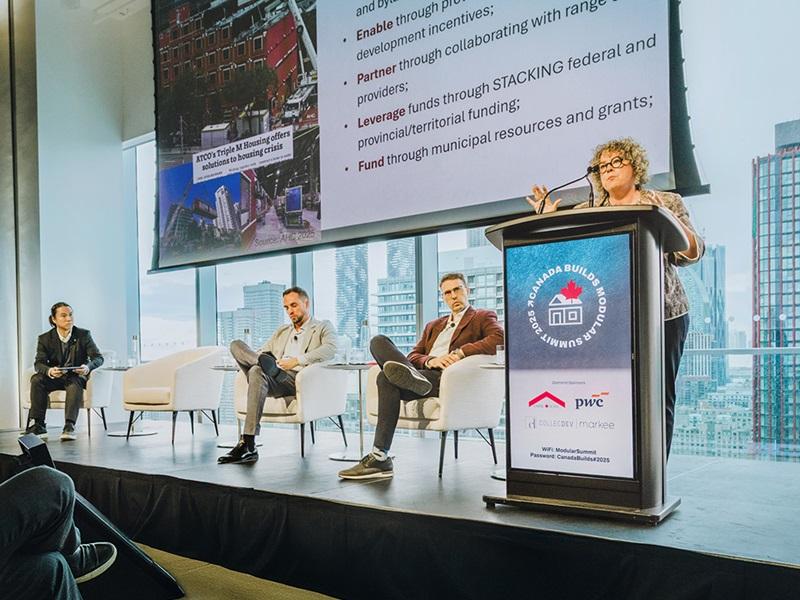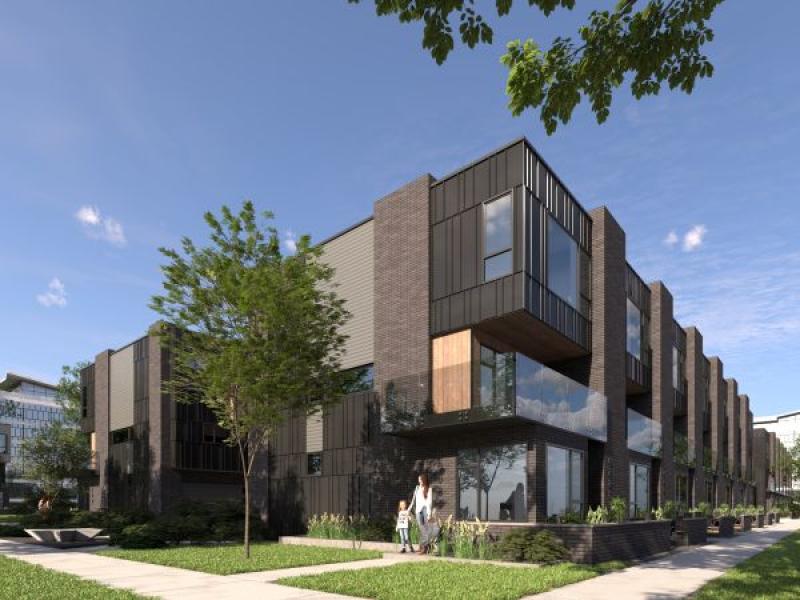
An increasingly popular idea endorsed by the Canadian government is that prefabricated housing can play a pivotal role in reducing housing costs. But don’t expect factory-built homes to save the day just yet, says real estate private equity firm Hawkeye Wealth.
Figures frequently cited by some industry sources, and during the recent federal election campaign, indicate prefabricated and modular housing can reduce construction times by up to 50 per cent, costs by up to 20 per cent, and greenhouse emissions by up to 22 per cent. Encouraged by the prospect, the feds propose providing $25 billion in debt financing and $1 billion in equity financing toward Canadian prefabricated homebuilding through Build Canada Homes.
But when Vancouver-based Hawkeye’s team dissected the numbers and conducted further research, it painted a mixed picture for those figures.
The “state for cost isn’t quite so clear” for homes built using manufactured components which are then assembled on-site, said Sean Smith, a Hawkeye account executive and the primary author of a white paper examining the claims. If anything, he contends present-day prefabrication costs more than traditional homebuilding.
“What we’ve found is that by and large, making the claim today that it saves money is not accurate. It might be less in some situations, but it’s often more,” even accounting for efficiency in labour and time, he said in an interview with RENX Homes.
Does prefab cost less? Probably not right now
As a private equity firm, Hawkeye cross-examined the numbers behind prefabrication as a matter of due diligence for investment opportunities, Smith explained. It promised a “mystical unicorn” that is good, fast and cheap.
“When you hear claims that are that big — that it’s faster and cheaper — if that’s the case, why isn’t everybody doing it?” Smith asked.
Hawkeye probed each claim, and assumed the commonly cited figures came from a 2019 McKinsey & Company report titled Modular construction: From projects to products that looks at a construction method that is very similar to prefabrication.
The firm concluded there was less reason to be optimistic about the affordability of prefabrication today.
A caveat of “if done right" is attached to the claim that prefabricated and modular housing can reduce costs by up to 20 per cent. On the same page, McKinsey says there is no track record of “consistent, game-changing cost savings among projects following this model,” and “there is often a premium associated with modular construction.”
McKinsey says this will likely change, though, "as the construction industry changes mindset and gains capabilities."
Quoting a 2022 market study titled The State of Prefabrication in Canada, Hawkeye discovered offsite construction has a higher upfront capital cost and a longer break-even period, which results in little or no construction cost savings.
The company also summarized three studies from China, concluding the capital costs are significantly higher, and in many instances, the labour savings cannot compensate for the additional capital costs.
Prefab does offer advantages today
Hawkeye is not disparaging the prefab industry, Smith said. He believes there is a good chance it will mature into a more reliably affordable industry and that it will play a big part in the Canadian housing sector.
He was also pleased with the outline of the federal government plan, saying it has a “reasonable chance” to increase investment and ultimately lower costs.
Plus, prefabrication has shown it can satisfy the other two big claims right now.
Most research has concluded the technique does result in housing built 20 to 50 per cent faster than traditional on-site means.
Case studies from the U.S., China and South Korea have also consistently confirmed a boost to energy efficiency. The BC Energy Step Code’s requirements for energy efficiency to be improved by 40 per cent in 2027 and 80 per cent in 2032 are readily achievable with prefabricated homes, Hawkeye said.
But it is important to have a grounded conversation around prefabrication’s current state, rather than applying projections to today, Smith said.
As of today, the firm has not made investments in the prefabricated housing sector, but he did not discount the possibility in the future.
How prefab can match traditional construction in cost
While prefabrication is not generally cheaper than traditional methods today, the hands-on experience of Montreal-based housing non-profit UTILE has shown that “under the right conditions, it has the potential to match traditional construction in terms of cost,” said Gabriel Fournier Filion, the CEO of UTILE, in an email exchange.
UTILE has employed modular building techniques for a 155-unit midrise complex in Rimouski, Que. In a previous interview, Fournier Filion told RENX Homes modular building moves faster than typical housing construction, but compared to a typical project, it can cost up to 10 per cent more, aligning with Hawkeye’s analysis.
To achieve its potential, Fournier Filion said new financial tools must be developed so a movable mortgage can be used to secure the deposit paid to the modular manufacturer at the start of production. This would alleviate financial risk at a critical stage.
Second, he proposed that design and construction must be approached in an integrated manner by a consortium of partners “who are actively engaged in mastering the technology and optimizing production processes across multiple projects."
To lower modular homebuilding costs, UTILE is advocating for a framework that addresses Fournier Filion's points, called the consortium model.










